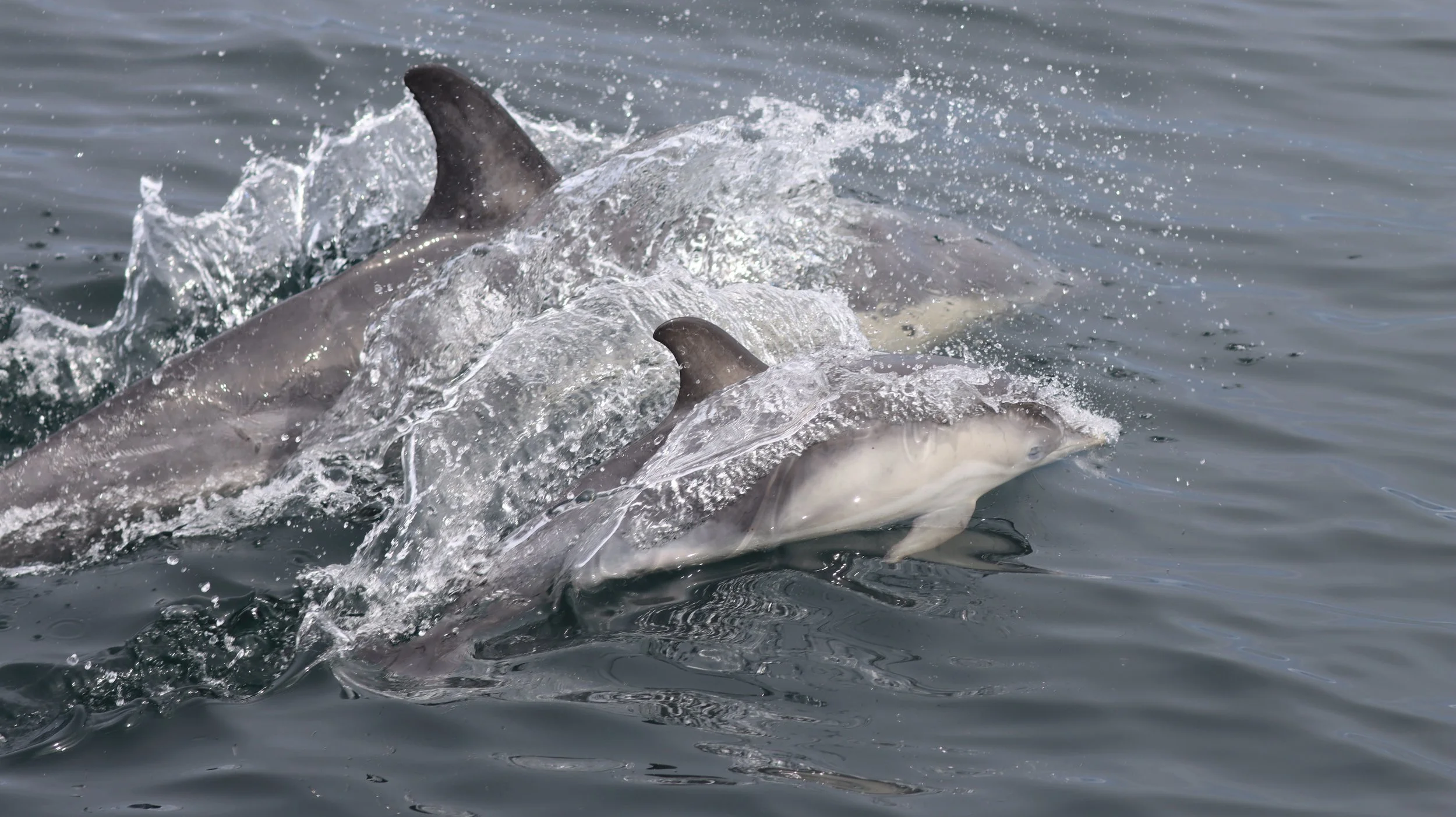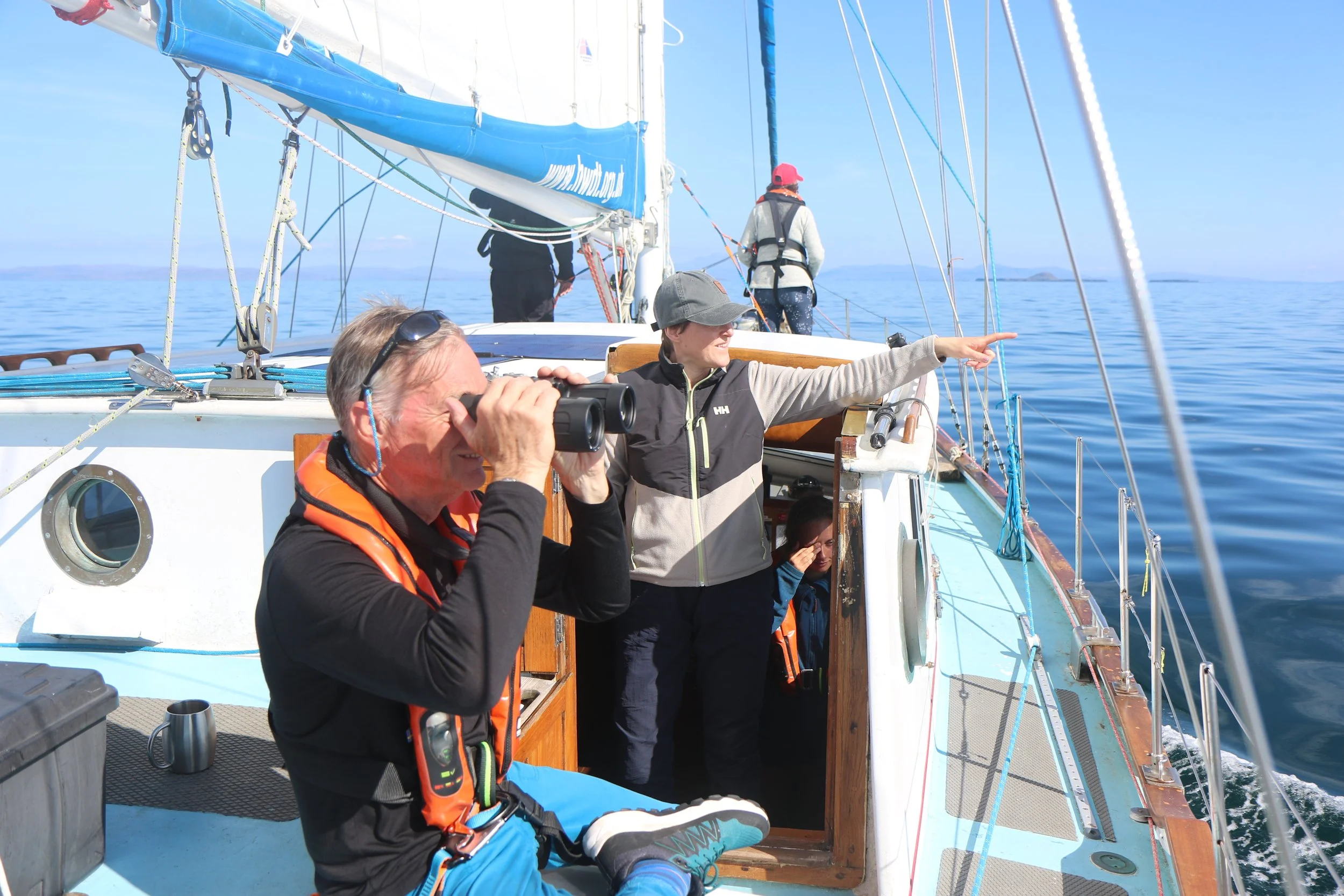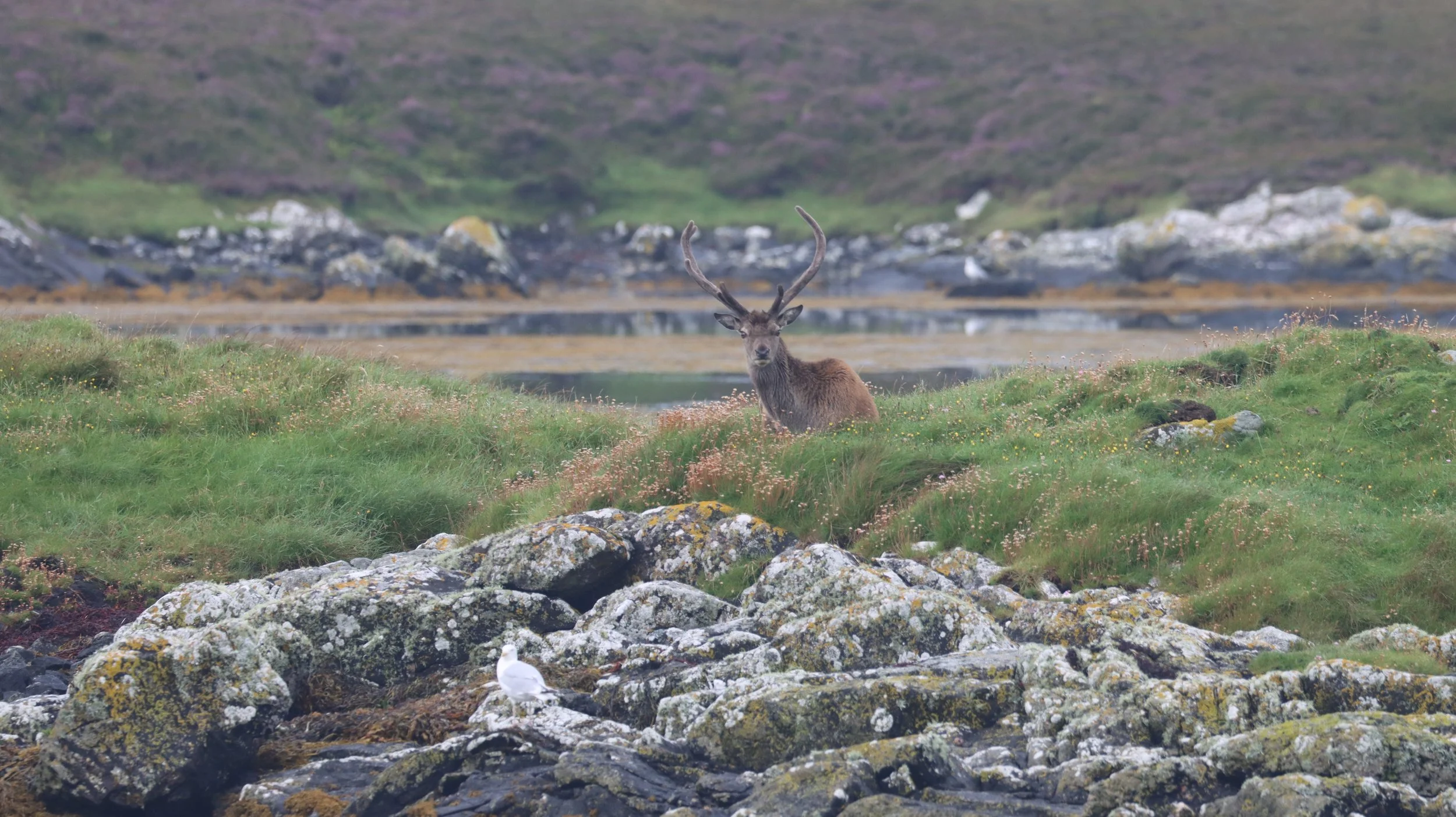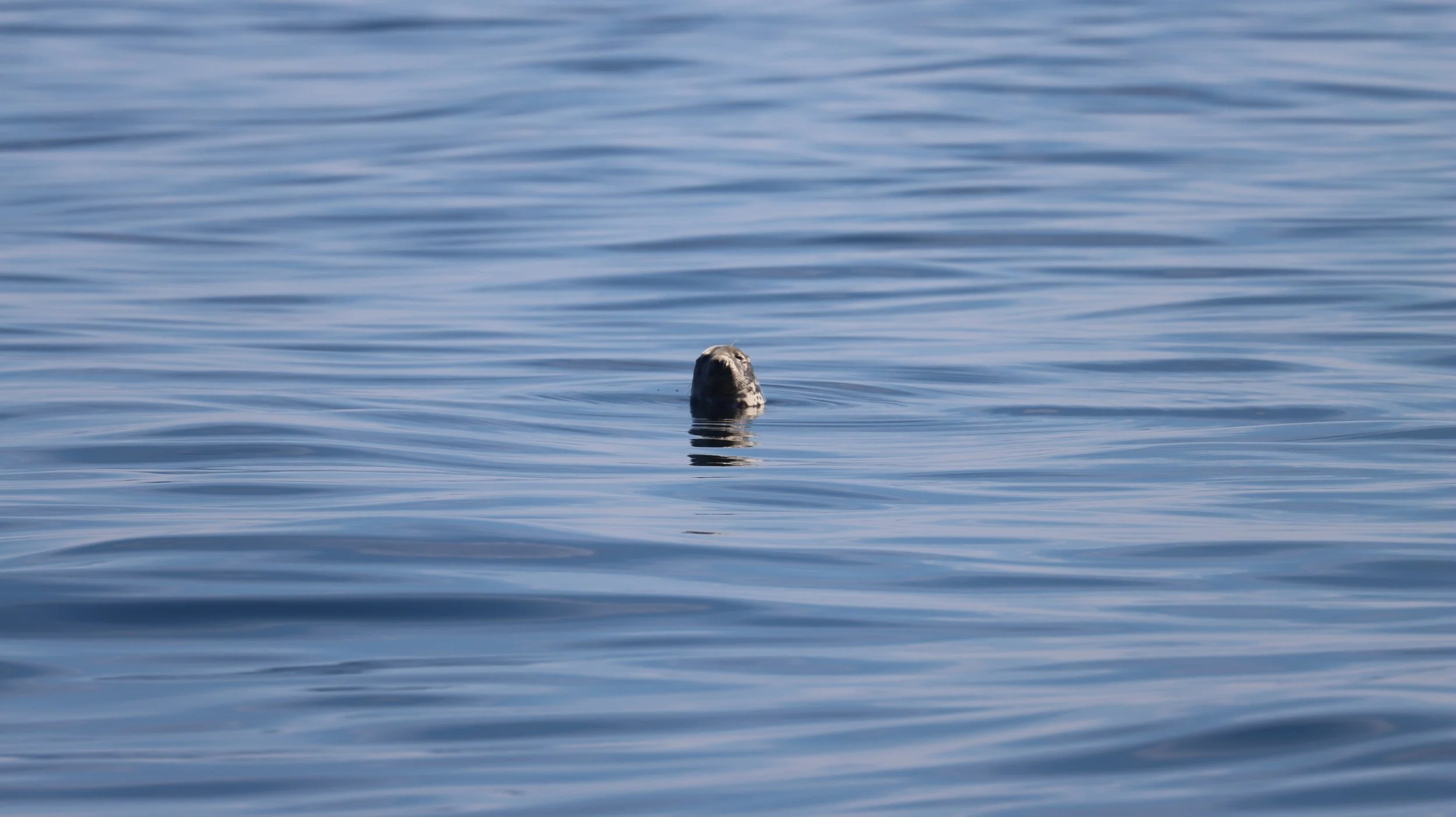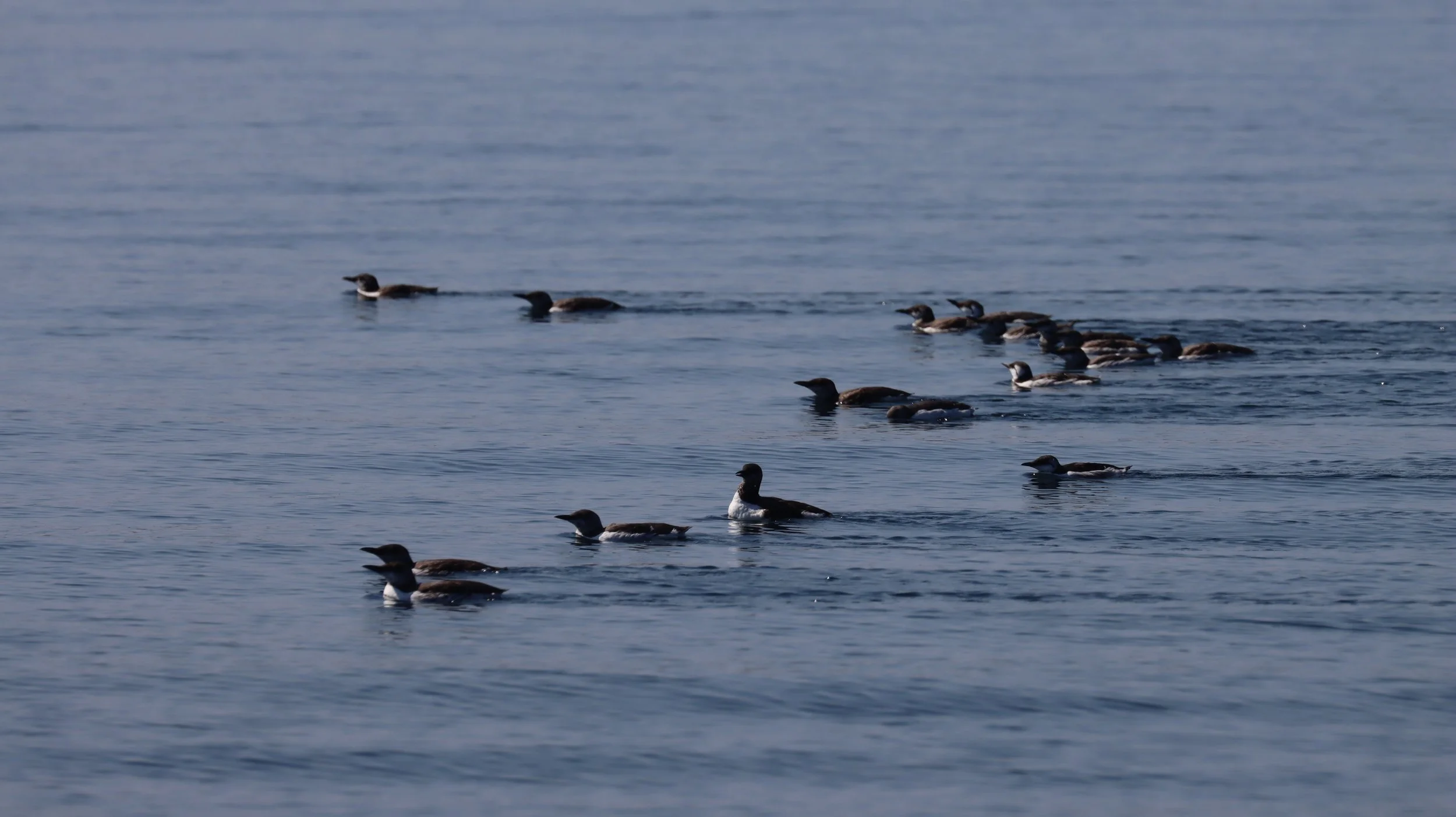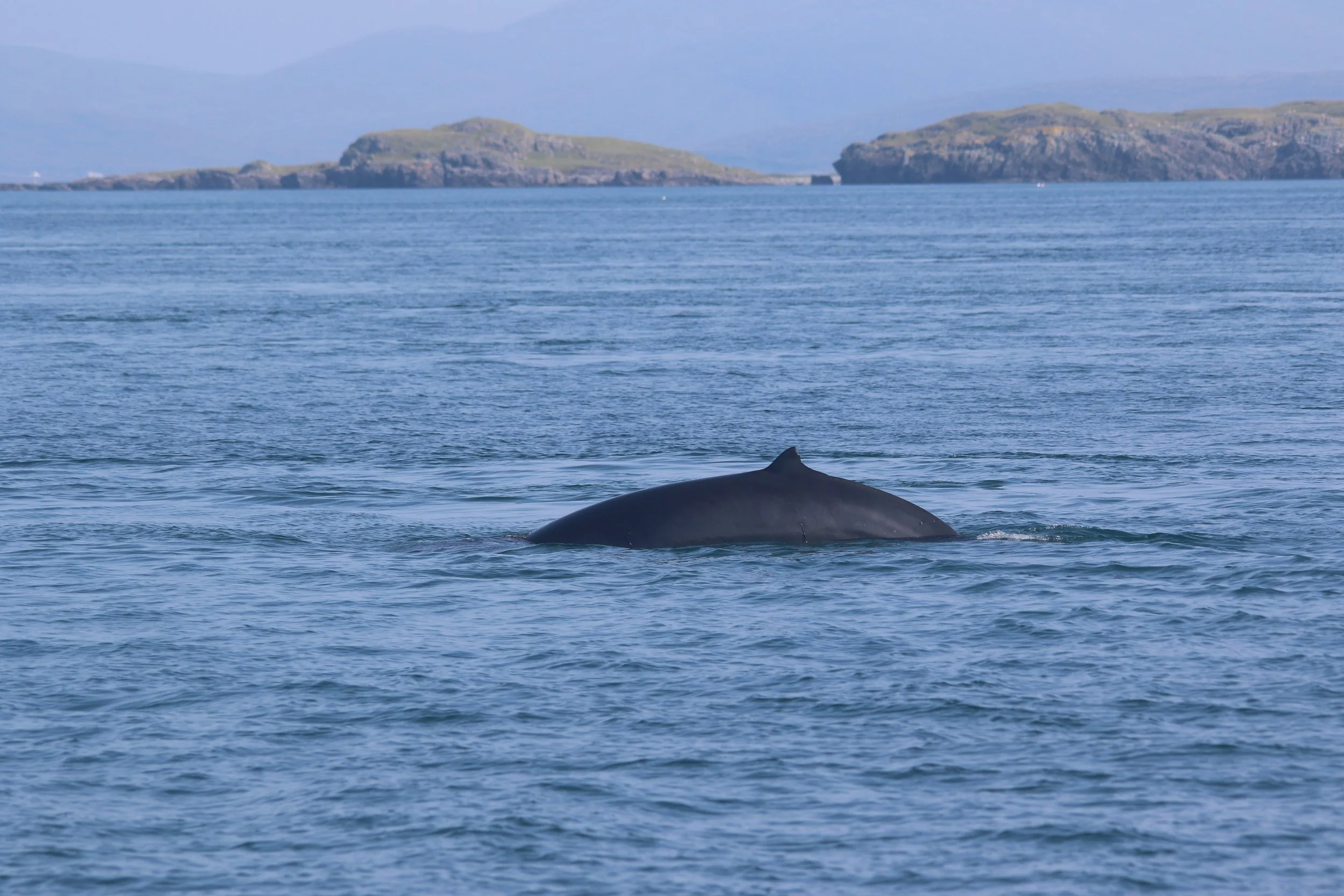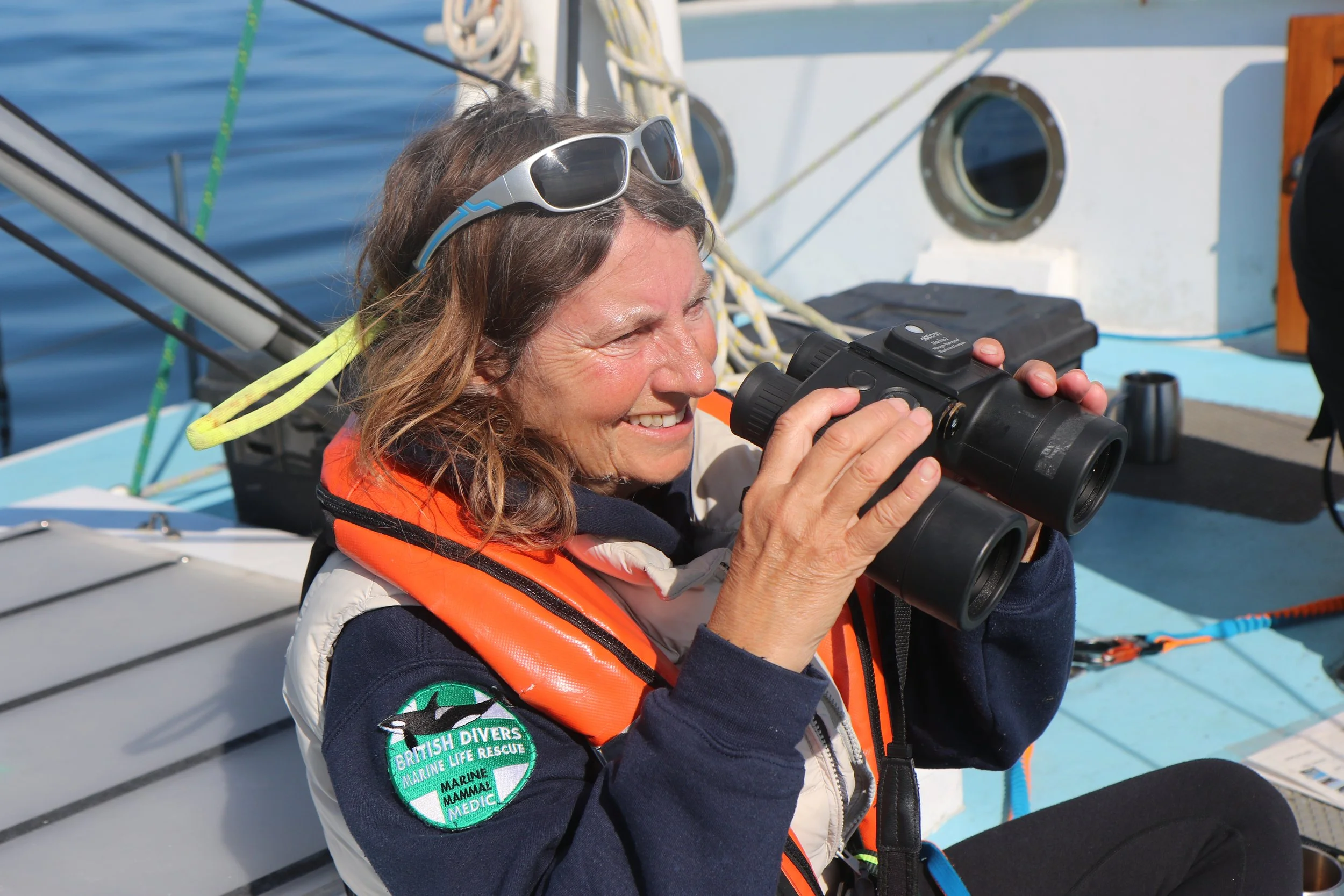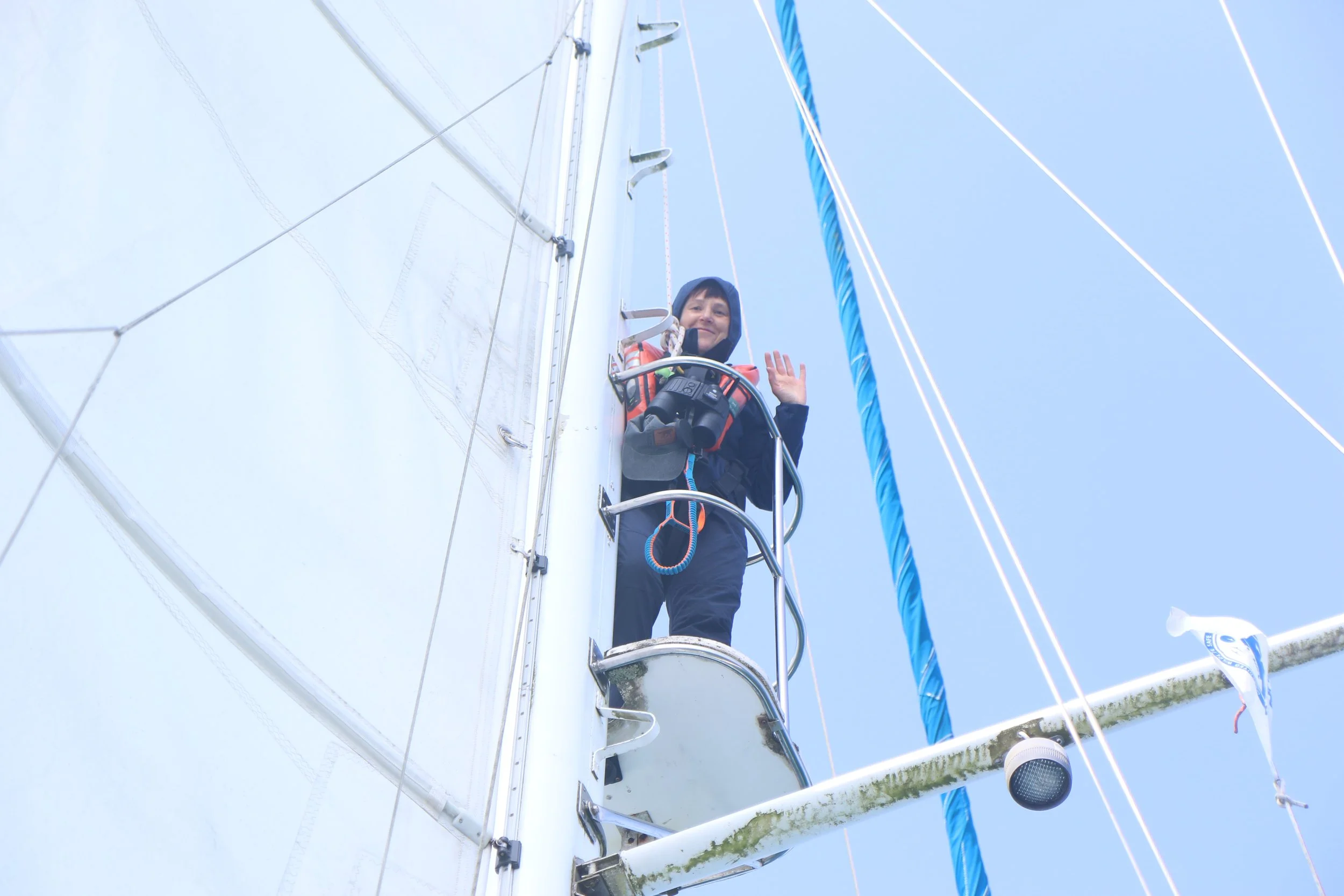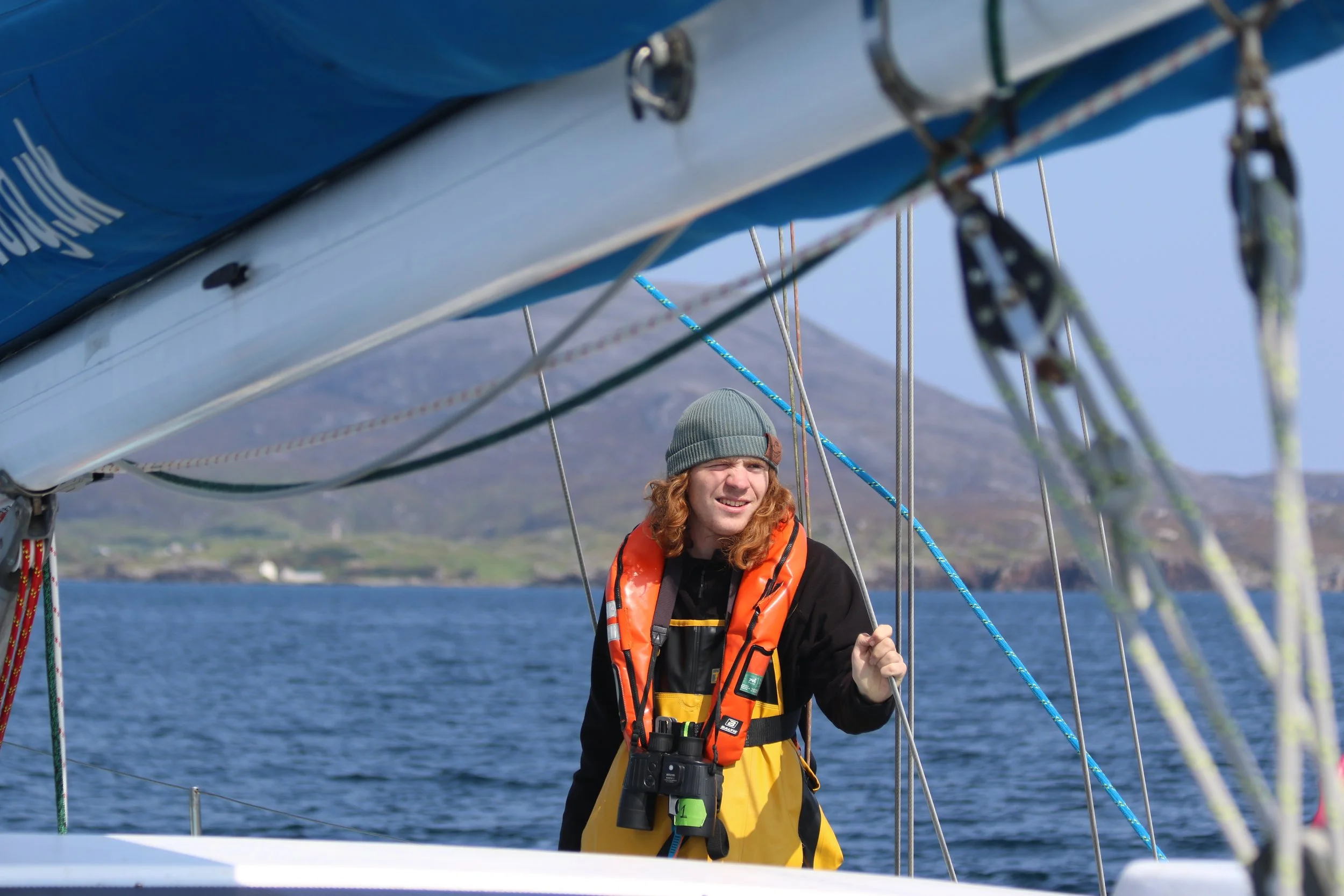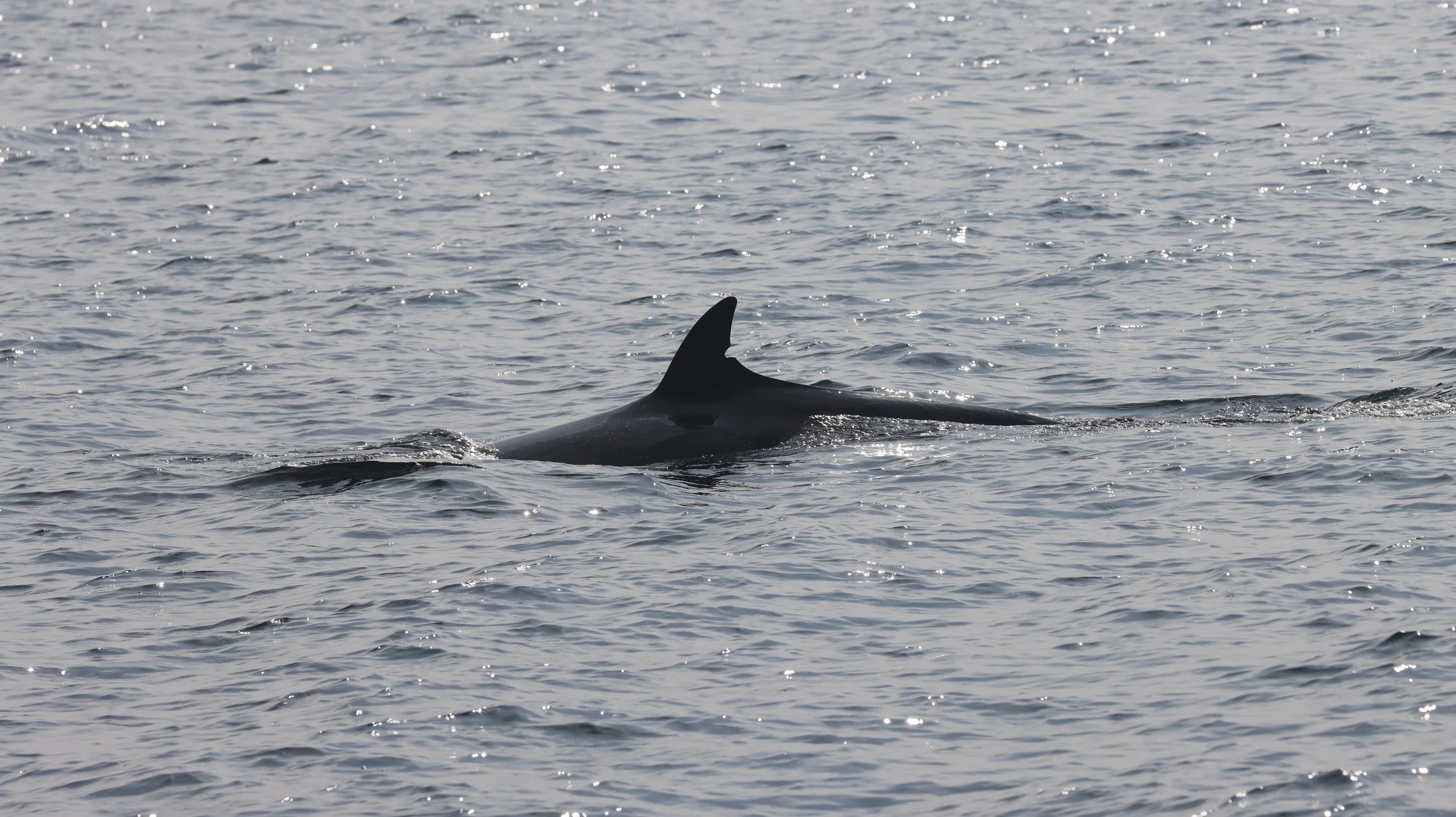To the edge of the Hebrides: surveying beyond the Outer Isles
Over nine days at sea, our intrepid team of citizen scientists explored west of the Outer Hebrides, gathering vital acoustic and visual data in rarely surveyed areas. Living and working aboard Silurian, our dedicated research vessel, the team encountered six species of marine megafauna, as well as surveying the most north-westerly waters of the 2025 season.
Each field season, we set sail on research expeditions across Scotland’s west coast, inviting passionate individuals to join us in safeguarding marine life. By collecting vital data, these hands-on voyages are helping to deepen the understanding of species and drive real change to protect the whales, dolphins, and porpoises in Scotland’s seas.
From the very first day, the wildlife delivered. A shy minke whale surfaced just minutes after leaving Tobermory, followed by harbour porpoises, common dolphins and curious seals. As the days unfolded, the group enjoyed unforgettable moments: minke whales flashing their ‘mittens’ beneath the boat, tiny dolphin calves bow-riding alongside their mothers, and even two mighty basking sharks cruising by in the sunshine. White-tailed eagles soared overhead, puffins and storm petrels skimmed the waves, and the crew soaked up golden evenings anchored in some of the wildest anchorages in Scotland.
The crew aboard Silurian surveyed 574 km of Hebridean waters, with settled weather allowing data collection west of the Outer Isles - a rare opportunity to study waters around our most north-westerly limit. A total of 44 hours of acoustic data were recorded during this survey. By listening to the underwater soundscape via our hydrophone, we can see beneath the surface of the waves and gain a rare insight into our underwater world.
Six species of marine megafauna were encountered across 110 sightings, including grey seals, common seals, harbour porpoises, common dolphins, minke whales, and basking sharks. Seabirds such as gannets, Manx shearwaters, guillemots and Arctic terns filled the skies with a sighting of two white-tailed eagles soaring above the skyline as we entered our anchorage on the Isle of Scarp, creating a core memory for many aboard.
These sightings are more than just special memories - they directly inform conservation. Each record contributes to understanding the distribution of marine megafauna, helping to identify areas vital for feeding, breeding and protection. By monitoring the seas so consistently, we can better advocate for the safeguarding of Scotland’s unique marine ecosystems in the face of increasing pressures.
During this survey, two of the minke whales encountered near North Uist had distinctive notches in their dorsal fins. Photo-identification is a non-intrusive research method which uses photographs of markings or features on the animal’s body to identify individual animals.
Between 1990 and 2020, HWDT has identified more than 300 individual minke whales in the Hebrides – all documented in our Minke Whale Catalogue. A third (33%) of these whales have been seen more than once - some over many years and others numerous times.
This information has built an important long-term picture about whale and dolphin movements on the west coast of Scotland, helping us assess the tendency of individuals to remain or return to particular areas. HWDT also monitors scars, injuries and parasites to provide valuable evidence about their health and the threats they face. These insights into their lives are vital to inform suitable conservation measures.
A HUGE THANK YOU TO OUR TEAM OF CITIZEN SCIENTISTS WHO JOINED THIS EXPEDITION: CAROLYN, SUSAN, KATE, ORSI, IAN AND TOM.
Throughout the nine-day voyage, the expedition team surveyed 574km of waters along Scotland’s West Coast, recording 160 marine mammal sightings spanning six different species of marine megafauna.

